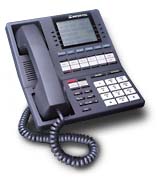| Message-ID: <202303201318Zbrr63gt@telecom-digest.us>
Date: Mon, 20 Mar 2023 09:05:19 -0400
From: "Steven Fleckenstein, N2UBP" <ocskywarn@gmail.com>
Subject: Fiber To The Home
Last September Frontier ran fiber in my neighborhood.
This month their telemarketers have been calling me daily with a
script informing me that "This call is being recorded, copper being
replaced by fiber."
I like the technology, and the synchronous speeds. I'm not sure where
they would place the ONT since all electrical, cable and telco lines
come into the side of the a house with finished rooms, and no basement
or garage for the install. Where would they get the power for the ONT?
Really don't want it in my finished home office.
I don't like telemarketers telling me that my last POTS copper fed
phone line will be replaced by fiber (in the 80's I had 5 phone lines
to cover home, business and BBS and the cables are still running from
the pole to my house even though Frontier promised to remove the
deadheads years ago.).
I still have a bad taste in my mouth dealing with terminating my
Frontier DSL service at the end of contract. Took them months to get
it right.
I don't like Frontiers recent implementation of a $50 charge for
returning equipment at service termination. Returning the cable modem
to Spectrum is free, just drive down to their local office and drop it
off.
I wonder what other fees and surcharges they will add over the life of
the contract?
I also don't want to lock myself into a contract and early contract
termination fees.
Wife and I are thinking of downsizing and relocating but not sure
when.
We were once surrounded by farmland. Today we are surrounded by car
lots, warehouses, and gas/oil fired electric power plants.
I don't see any signs that my neighbors are signing up for Frontier's
fiber service. Shame Frontier has to take a good thing and bury it in
terms and conditions.
Steve
N2UBP
Middletown (Wawayanda), NY
|
Message-ID:
<DM6PR02MB60749FC9EC05D02AF3855F6480BD9@DM6PR02MB6074.namprd02.prod.outlook.com>
Date: 17 Mar 2023 19:22:51 +0000
From: "Fred Weksberg" <VE3PIE@remove-this.outlook.com>
Subject: Searching for Teletype machines
Hello Bill,
I am a ham operator, and want to setup a teletype station
I am looking for a model 28 ASR as my first choice, and a 2nd/3rd
choice would be the 28 KSR, or the model 28 compact.
I would appreciate any sources you may know of, for me to purchase one
of these units.
I am located in Toronto, Canada
Thank you.
Fred Weksberg
VE3PIE / VE3WN
| Moderator's Note |
|---|
|
I recommend that you sign up for the "Greenkeys" mailing list, and
post your request there as well: it's a list for those interested
in teletypewriters and radio-teletype (RTTY), and a good source
for info of this kind.
The URL is https://mailman.qth.net/mailman/listinfo/greenkeys
| | - Bill Horne |
|---|
|
| Message-ID:
<SA1PR09MB89372AA29ACBAAB2CA03E57DF8BC9@SA1PR09MB8937.namprd09.prod.outlook.com>
Date: Thu, 16 Mar 2023 16:12:06 +0000
From: "Turner, Patton (FAA)" <Patton.Turner.remove-this@and-this-too.faa.gov>
Subject: Re: Open RAN: Revolutionary, or a tool for a revolution?
Fred Goldstein <invalid@see-sig.invalid> writes:
>
> You're making an incorrect assumption about what Open RAN
> is. They're doing nothing about spectrum; the carriers are trying to
> buy it up as much as possible in order to play Monopoly with it,
> where you get higher rent when you have all of the squares on a
> street and can build hotels on them, even if nobody checks in.
>
> Open RAN addresses the interfaces between components in a
> mobile-carrier base station. This permits one of the cellular
> oligarchy to purchase interchangeable components from multiple
> vendors, reducing their CapEx. The most important such interface is
> the one going to the Radio Unit that attaches to the antenna. LTE
> and NR ("5G", an extension to LTE) are extremely complex, and a base
> station needs lots of computing power. While there are outdoor base
> station units, carriers more typically divide the base station into
> a baseband unit which goes indoors and a radio unit that goes
> outdoors, on top of the tower, since on mobile bands, especially
> above 1 GHz, transmission lines are lossy. Power and a fiber optic
> cable go to the RU, which is pretty small. Open RAN allows mix and
> match between those manufacturers, and also, it seems, in a few
> other parts of the cell site equipment. But if you're not a cellular
> carrier spending six figures on electronics at each site, it's no
> more relevant than, say, “Open Yacht” or “Open Packinghouse.”
Wouldn't public access to CBRS spectrum - both 50 Mhz of true public
spectrum, and the ability to use unused or unassigned priority access
channels on another 100 Mhz - allow for a truly independent private
deployment? By, say, an oil company on the north slope (or even an
offshore oil rig), a big industrial campus or a campground or HOA?
The lack of affordable Open RAN solutions has led to being dependent
on slicing of a carrier managed network. Government and military
users have access to small blocks of private spectrum (A cool graphic
in an Army Signal Corps PowerPoint showed an olive drab tactical radio
being equal to your teen's iPhone with no Tic Tok video access.)
While a cellular company might spend 6 figures per site, you can put
together a 5G NSA node on a single band with a 4G core for 5 figures.
Of course, it's not legal to run outside a Faraday cage, but it is
useful for R&D. Open RAN could be expected to bring down the costs of
small scale deployment.
It could of course be used or misused by well-funded protesters.
Pat Turner
|



